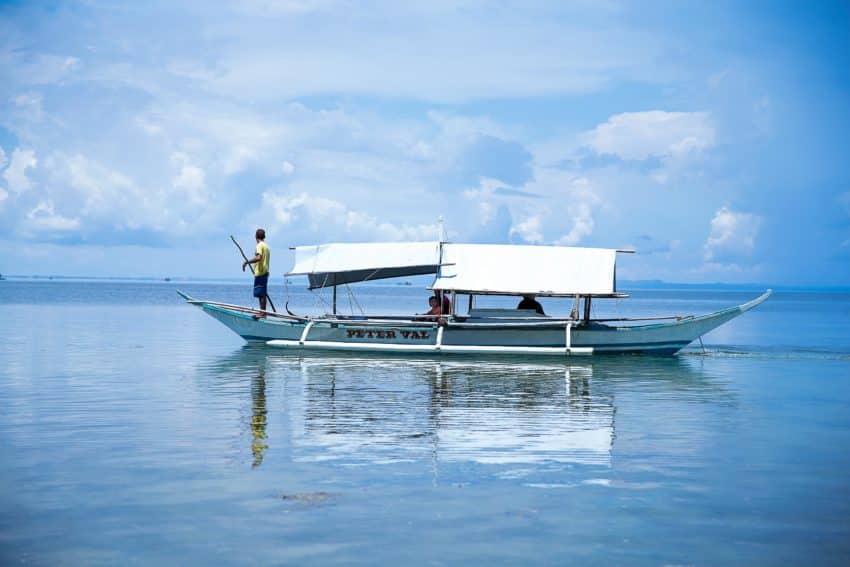Whether traveling from surrounding villages or distant islands, families in the Philippines seeking cleft surgeries for their children must sacrifice precious time and resources to reach Operation Smile medical mission sites. This scene is playing out once again on Cebu, the fourth most populous of the more than 7,000 islands comprising the archipelagic country.
The Operation Smile screening area at University of Cebu Medical Center is packed with patients and their families who could not access surgery in their communities. One of the patients at the Cebu medical mission is Loraine, a 7-year-old who received surgeries to both her cleft lip and cleft palate from Operation Smile about two years ago. This time, she’s back to receive surgery to repair a small fistula in her palate.
While she has much in common with many of the patients gathered here, Loraine’s family is special. Her father, many of his sisters and their children also suffer from cleft conditions.
This unusually high concentration of cleft cases within Lorraine’s family piqued the interest of a team of researchers from the International Family Study (IFS) working at the medical mission.
A medical research collaboration between Operation Smile and our partners at the University of Southern California and Children’s Hospital Los Angeles (CHLA), IFS analyzes genetic data obtained from saliva samples voluntarily provided by patients, their families and control groups, as well as information collected from maternal and paternal questionnaires on environmental exposures and lifestyle habits.
The first study of its kind, IFS blends the data from this genetic analysis with the questionnaire findings to provide the most comprehensive understanding of the causes of cleft conditions. The ultimate goal of the study is to put this evidence into action to prevent cleft conditions before they develop in the womb.
Ongoing since 2009, the study has been conducted in nine different countries – the Democratic Republic of the Congo, Honduras, Madagascar, Mexico, Morocco, Nicaragua, Peru, Philippines, and Vietnam – representing the poorest segments of those populations and includes more than 10,500 individuals across over 4,700 families. More than 3,200 individual samples were collected from about 1,400 families in 2016 alone. To date, the project has amassed the largest repository of genetic information relating to global cleft populations ever collected.

Before the medical mission began, the IFS team decided to collect data from Lorraine’s family where they live on Botigues, a small island northwest of Cebu. Christine Stafford, a research coordinator at CHLA, had to take a “pump boat” – a traditional outrigger canoe powered by a small gasoline engine – to get to the remote island’s fishing harbor, where many of Loraine’s family members came to welcome her.
“This family is very special because it’s such a big family and many of them suffer from cleft conditions,” Stafford said. “The bigger the family, the easier it is to find what causes it.”
Having just arrived home from school, Loraine and her cousins were dressed in their school uniforms. Some of the smaller children had untreated cleft lip and cleft palate. Loraine’s father was born with a cleft lip and cleft palate and so were four of his sisters. Two of his other sisters were born only with cleft palate and his four younger brothers were born without cleft conditions. Now, most of them met here to give Christine saliva samples for genetic analysis.
“We wanted to come and visit this family because when you’re studying the genetic component as a cause of cleft lip and palate, it’s very helpful to look at a family, because then you can compare the family members to each other,” Stafford said. “You can see what the family members with cleft have in common, and then you can see what they don’t have in common with the members without the facial difference.”
Like most houses here, Loraine’s house is built of coconut wood with a cement floor and a scrap metal roof. Loraine’s father collects and sells scrap metal and recyclables to make a living for his family. There were piles of rubber tires and plastic bottles in the yard waiting to be transported and sold. A fire of leftover scrap burned in the middle of the clearing, and the family’s pig foraged for food in the shade of a tree.
Loraine’s father prepared a meal for the guests and his relatives. He cooked fish and crab on a stove heated by wood fire. Rainwater is collected in huge barrels, but there is also a deep well in the village that’s used as a water source.
According to IFS research, potential risk factors for cleft conditions are present in this environment. Though Loraine’s father is the cook this evening, maternal cooking with wood fire has been identified as a risk factor, as has maternal use of well water. Others include advanced maternal age, pregestational hypertension, gestational seizures, paternal tobacco smoking, paternal lower education, maternal rural residency, maternal indoor tobacco exposure and maternal exposure to agricultural and industrial chemicals.

“What we hope to give back to these communities is overall knowledge,” IFS project manager Frederick Brindopke said. “We need to do it in terms of preventative measures and implementations in the community – whether that’s anti-smoking campaigns or campaigns to enhance prenatal care for mothers – so that they’re being seen as soon as they’re pregnant to receive the vitamins and nutrition they need.
“That knowledge will hopefully empower communities to try to reduce the burden of cleft lip and cleft palate throughout the world.”








